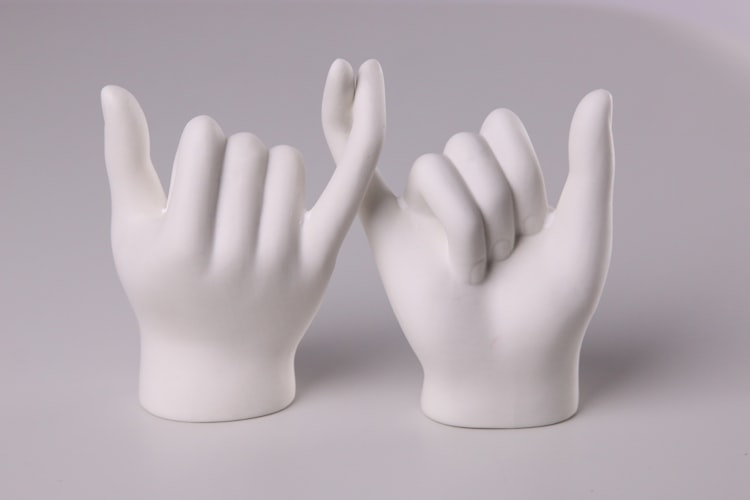How to Craft an Effective Brand Promise

Every company, from cutting-edge software providers to so-boring-I-could-fall-asleep B2B organizations, has a brand. Whether your brand is successful or not comes down, in large part, to its brand promise and its ability to deliver on it consistently.
In this article, we’ll discuss what a brand promise is and how to create one in three easy steps. Then we’ll share a couple of excellent brand promise examples from leading organizations.
Let’s get started!
What is a Brand Promise?
A brand promise is the value and/or experience a customer expects to receive from a brand.
For example, Geico promises customers that “15 minutes could save you 15% or more on car insurance.” So Geico customers expect quick, money-saving interactions when they engage with the insurance company. (We’ll dive into more brand promise examples later.)
Your promise is essential to the success of your organization. Why? Because it sets expectations for your customers. When you meet or exceed these expectations, you build customer loyalty, which can have serious monetary benefits.
But according to Gallup, only 50% of customers expect brands to deliver on their promises. This means that your company has an opportunity to distinguish itself from its competitors!
Create Your Brand Promise in 3 Easy Steps
Your brand’s promise to customers is extremely important. So in this section, we’ll discuss how to create a brand promise that connects with your target audience.
1. Know Your Customers
Have you taken the time to create detailed buyer personas? If not, this is the place to start.
Study your audience to learn demographic details like their general age, gender, occupation, and income level. Then dig deeper to find psychographic information like their hopes and dreams, fears, and daily challenges.
Equally as important as knowing your audience is knowing how your audience views your company. Do they see you as affordable or expensive? Cheap or reliable? Innovative or run of the mill? Their thoughts will help shape your promise.
For instance, if customers see your company as affordable and reliable, you can double down on these sentiments in your promise. If they see your company as expensive and cheap, you can craft a promise that contradicts these views and then work to make said promise a reality.
Remember, the only way to truly know what your customers think of your brand is to ask them. Send a survey, call them on the phone, do whatever you have to do to get their opinions.
2. Understand Your Market
Next, you need to study your industry and your company’s place within it. Ask questions like:
- What problem(s) do we solve?
- What categories do our products fall into?
- Where are our products on the price scale?
- What level of quality are our products?
- Why do customers choose us over competitors?
By answering these questions, you should get a solid idea of where your company is in the market. This information will help define your brand and set it apart.
It’s important to remember that every company has competitors. You may have created an innovative product that solves an important problem. But chances are, other companies solve that problem, too, albeit in different ways.
Your company doesn’t exist in a vacuum. You have competitors. Your job at this stage of the brand promise-making process is to determine where your band is in relation to them.
3. Craft Your Brand Promise
Now that you have a strong understanding of your customer, the way they see your brand, and where your brand sits in the market, you can craft your brand promise.
The easiest way to do this is to think about what your company does and for whom.
- We create innovative software products to help business leaders manage projects.
- Our company offers affordable meals to health-conscious diners.
- We use the highest-quality materials to make athletic shoes for sports enthusiasts.
Of course, once you’ve crafted your base statement, you can rewrite it in a catchy way that resembles a slogan or tagline. For example, “our company offers affordable meals to health-conscious diners” becomes “good for your body, light on your wallet.”
Brand Promise Examples
One of the best ways to learn how to craft a compelling brand promise is to see how successful companies have already done it. With that in mind, let’s take a look at two promises, one from BMW and one from Walmart:
BMW: “The Ultimate Driving Machine”
BMW aims to create high-end vehicles, both in terms of design and performance, for their customers. This goal is embodied in the company’s brand promise and slogan: “The Ultimate Driving Machine,” which BMW uses in many of its marketing materials.
What’s the lesson here? Have confidence and state your brand promise with authority. “The Ultimate Driving Machine” is a bold statement, but it works because BMW lives up to expectations.
Walmart: “Save Money. Live Better.”
Walmart, the largest retailer in the world, promises customers that if they shop at their stores, they’ll save money and live a better life. Definitely a compelling brand promise!
Any time you can promote tangible benefits in your promise, go for it. Benefits are what customers connect with, which means they’re also what sell products. Use your brand promise to tell people how your company will help them achieve their goals.
In Conclusion
Your brand promise is essential to the success of your company.
Fortunately, with a little elbow grease, you can craft a winning promise for your organization. Just follow the three steps outlined above: know your customers, understand your market, and craft a compelling promise your audience will connect with.
Then do whatever you can to deliver on your promise at all times. This is the key! Your brand promise means nothing if you can’t deliver on it consistently. Good luck!
– Jacob Thomas
